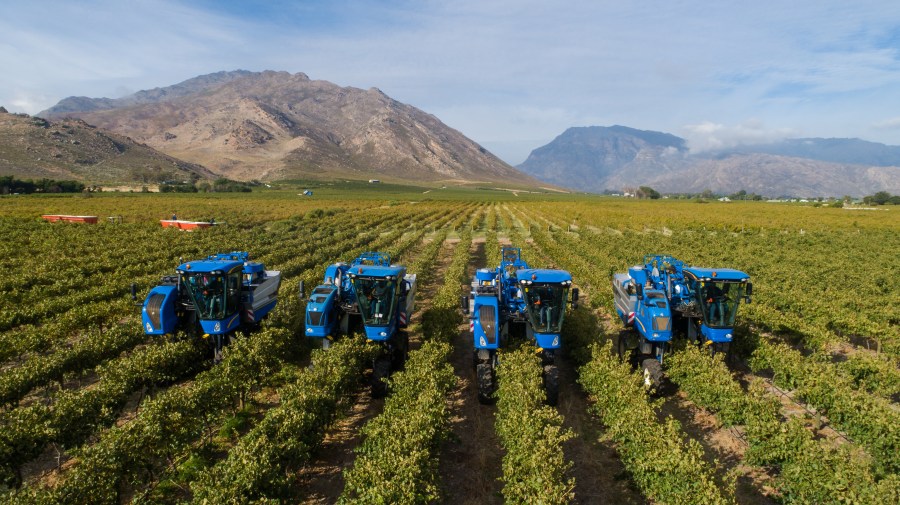Does the beauty of machine harvesting give beautiful wines?
Harvest machines became more popular in the old wine world 40 years ago. They improve the efficiency by dropping the manual work in a vineyard by 30%-40%.
Harvest is a delicate time-sensitive operation where hostile climate and disease appearance can represent expensive issues. With enough crop per meter, the picking can be cheaper, way quicker and more eco-friendly, as in most cases, it requires only two operators in the vineyard for both: picking and transporting the grapes to the winery. Harvesters also allow using the winery equipment at full potential making processing faster and cheaper, while saving cleaning water, time and energy. We normally process two to three times more grapes compared to hand picking: e.g. 18 tonnes, three people, with a three tonnes press in a 17 hour shift. By leaving the stem on the vine, (3%-7% in weight and 30% or more in volume), the marc management is easier.
How about the quality for still and sparkling wines? What changes in winemaking?
In order to keep it simple we will take the case of a single estate where the vineyard surrounds the winery. Even so, with the right set up, the grapes can also travel a few miles or be de-juiced for settling onsite before despatch. Key point: once the berry is detached from the stem, some juice is extracted, thus, maceration and oxidative processes get started: is this good or bad? It depends what we want to achieve.
Let’s explore some possible approaches in the UK context focusing on oxidation and maceration (extraction):
- Oxidative
- Balanced
- Reductive.
Oxidative
In the oxidative approach we don’t use any oxidation/microbial precaution such as SO2, tannins, ascorbic acid, inert gas, chitosan, etc. This can be indicated for non-aromatic wines where shelf life/ageing is important like in sparkling bases. In this scenario, we’ll oxidise some compounds, generate new ones and potentially protect the shelf life: how is this possible? Well, if oxidation happens at juice stage we’ll lose some compounds, (mostly phenolics and free primary aromas if any), that can’t be part of the oxidative processes anymore, making the wine last longer with very good ageing potential and tertiary aromas potential. The level of oxidation can be managed at will and it works great for example with pressings decreasing colour and tannins in the finished wine.
Balanced
The balanced approach provides some protection and offers the best flexibility for the creation of diverse blending components between still and sparkling as it can be adapted from batch to batch and each pressing fraction can be treated differently according to taste/target. This promotes a lasting fruit expression, good ageing potential and the expression of secondary and tertiary aromas.
Reductive
The reductive approach promotes the preservation of primary aromas with a certain phenolic structure and a moderate shelf life (except red wines, we might talk about them another time). This wine will need a high level of protection during its entire life and it can be suitable for aromatic still and sparkling wines (charmat).
In all cases, it is crucial to manage maceration and oxidation according to the target, e.g. longer and balanced macerations for rosé, and aromatic white grapes with precursors, less for non-aromatic and even less for classic sparkling bases which include quick de-juicing from picking (timing).
Some phenols can be reduced with positive effects in most cases by promoting oxidation at juice and/or using PVPP, proteins etc in different steps.
In summary, it all depends and yes, machine harvested grapes can make quality wines of many kinds as long as we apply the “right” criteria and equipment accordingly.
The above can also be applied to hand picked grapes based on target.
Salvatore Leone Winemaking Consultant has been an independent winemaking consultant in the UK for 10 years and I’m very excited to start my series of articles with this topic by sharing my experience.




